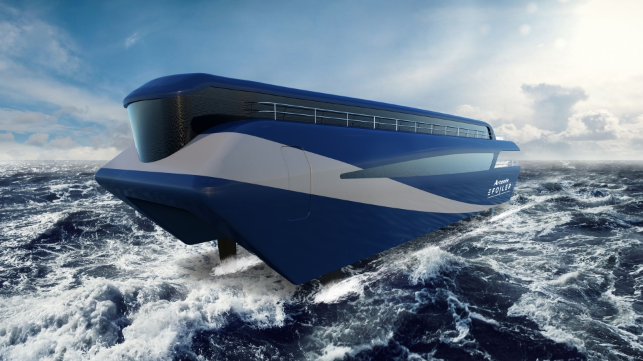Competing High-Speed Catamaran Electric Ferries

The combination of advances in boat hull design, hydrofoil design and electric storage technology has prompted research into high-speed electric ferry vessels. So far, a pair of companies has produced simulation video presentations of their future electric ferry technology. One company is located in Ireland and the other in Australia, both having had considerable background in the research and development of high-speed vessels, one for commercial ferry purposes and the other for competition.
Introduction
The ferry has become an essential component in municipal and short-distance intercity passenger transportation, with some ferry vessels actually carrying road vehicles. Prior to the pandemic lockdown and long after the lockdown period eventually ends, road vehicle traffic congestion occurring during AM and PM rush hour periods literally slowed traffic to a crawl. During such times, alternative forms of transportation that avoid the public roads often provide much faster travel than road vehicles. Water-based ferry transportation provides an essential service in many cities internationally, as well as between many cities located within close proximity to each other.
The Australian companies INCAT and AUSTAL have designed and built numerous configurations of mainly multi-hull, high-speed ferry vessels that operate in Australia and internationally. Examples include carrying passengers and road vehicles across Lake Michigan in the USA, also passengers between towns of the Canary Islands and between the Caribbean islands of Trinidad and Tobago. The team at Artemis Technologies of Ireland has had extensive experience designing catamaran hydrofoil racing yachts and have begun to focus their expertise on developing a battery-powered, high-speed hydrofoil catamaran ferry vessel that would rival an electrically-powered high-speed catamaran ferry concept from Austal.
The Vessels
The proposal from Austal would be capable of sailing in as little as 2-m draft of water at a speed of 25-knots over a distance of up to 175-miles while the hydrofoil concept from Artemis Technologies is intended to travel at up to double that speed, or 50-knots over a shorter distance. While the Austal vessel is intended to carry up to 450-seated passengers, the Artemis ferry is intended to carry up to 350-seated passengers. Both vessels promise to offer smooth ride motions when sailing through choppy water that often occurs between a mainland and an offshore island.
There are numerous examples where the maritime distance is shorter that road or railway distance, such as the example across Lake Michigan and also the Baltic Sea between Stockholm and Helsinki. While constructing a bridge or excavating a tunnel will often provide more direct access using railway or road vehicles, a continual increase in traffic will push the infrastructure to its limits, again creating application for ferry vessel service. While the design capacity of the competing concepts will have application at numerous applications internationally, there are locations where market size would require smaller-scale versions of these vessels.
Energy Storage
While both concept ferry vessels propose to initially use lithium-ion battery technology for propulsive energy storage, advances are occurring involving alternative electrical energy storage technologies. The developer of the original lithium-ion battery, Dr. John Goodenough has been devoting research into solid-state battery technology while competitors have been refining hydrogen storage combined with solid-oxide fuel cell conversion to propulsive electric power. One developer of electric boats has proposed to use vanadium flow battery energy storage technology as it offers potential for 20,000-deep-cycle recharges and discharges. Suitability of vanadium flow technology in fast electric ferry vessels has yet to be established.
Other electric energy storage technologies of interest would include the aluminum-air technology that is purported to be able to hold more energy than lithium-ion technology. At the present time, while much development work is still underway involving this technology, the suitability of applying this particular battery technology to fast ferry application would likely be known within the next year. Liquid air energy storage is currently being tested in the UK and offers the possibility of rapid recharging, by transferring super-cooled liquid air from insulted storage tanks located at a vehicle terminal, with suitability for fast ferries yet to be established.
Conclusions
Austal is a leader in the design and construction of fast ferry vessels, with numerous examples of their products in operation internationally and sailing through rough ocean conditions. Artemis Technologies has had extensive experience designing and building high-speed catamaran hydrofoil vessels that have sailed through rough ocean conditions and plan to adapt that expertise to fast ferry technology. A variety of evolving electric energy storage technologies are currently under development. A few of these technologies likely have future application in maritime propulsive energy storage application, possibly allowing some future ferry vessels to sail greater distance at higher speed.
The opinions expressed herein are the author's and not necessarily those of The Maritime Executive.
